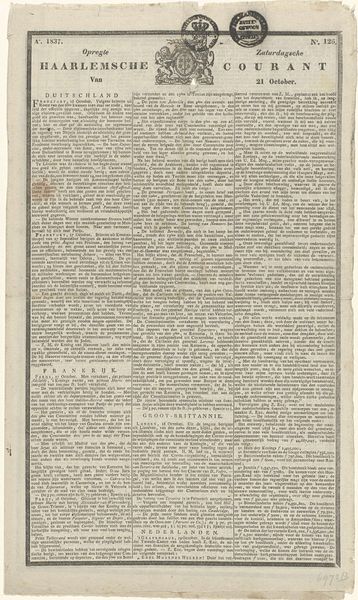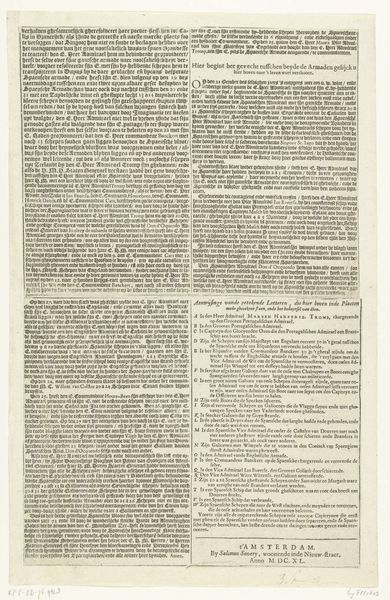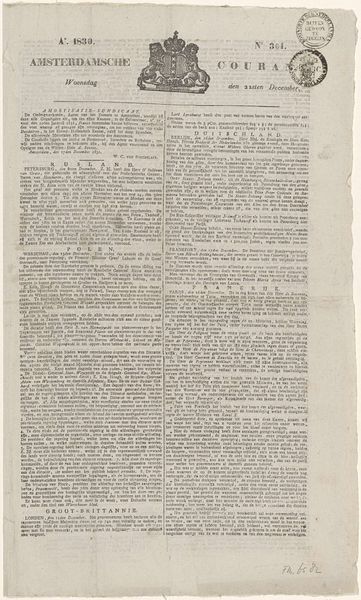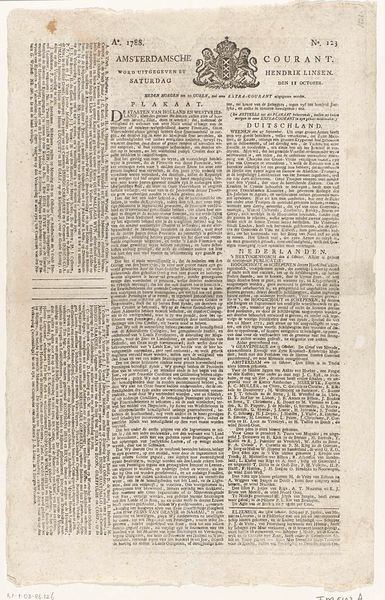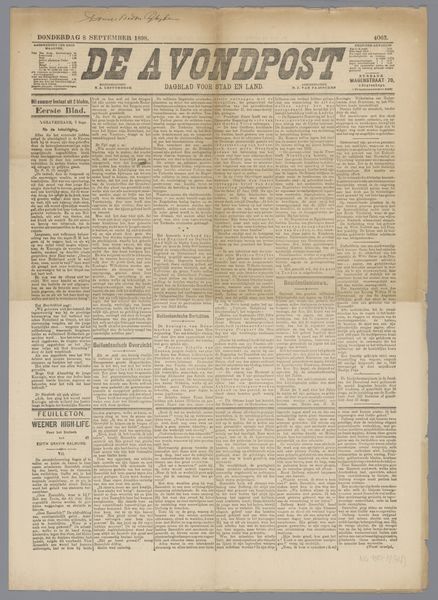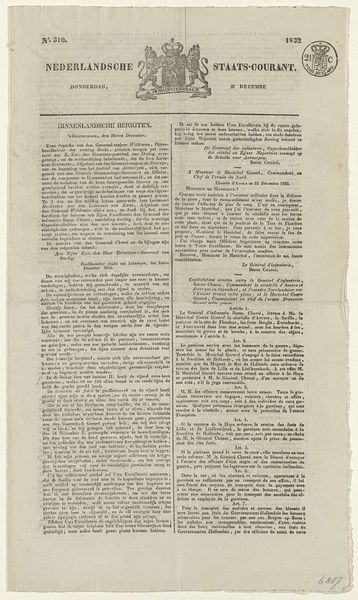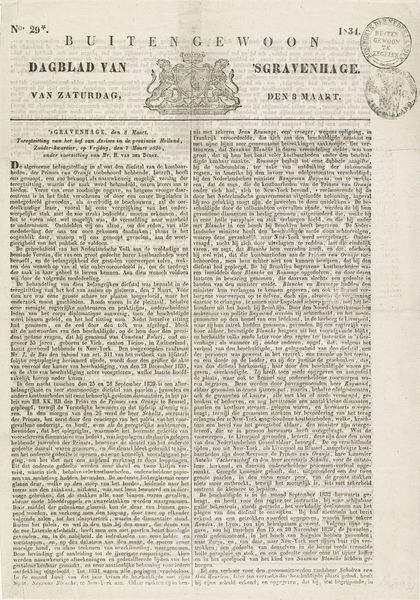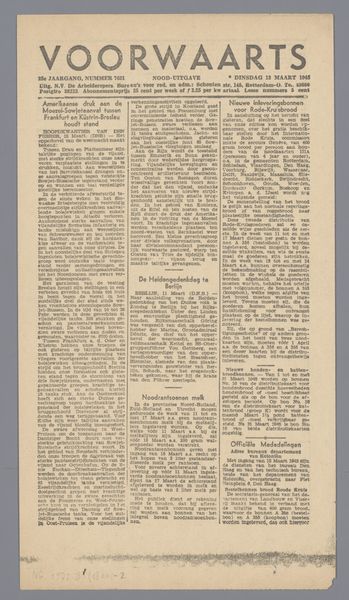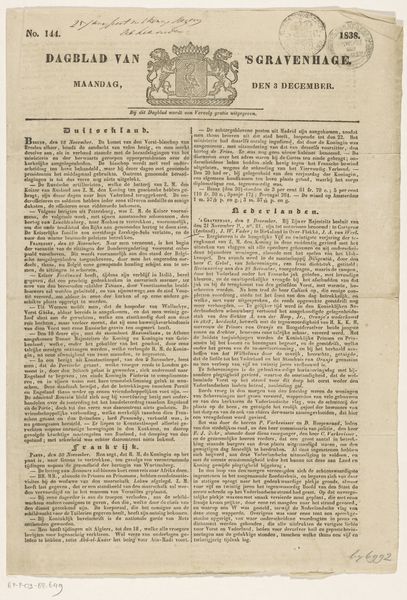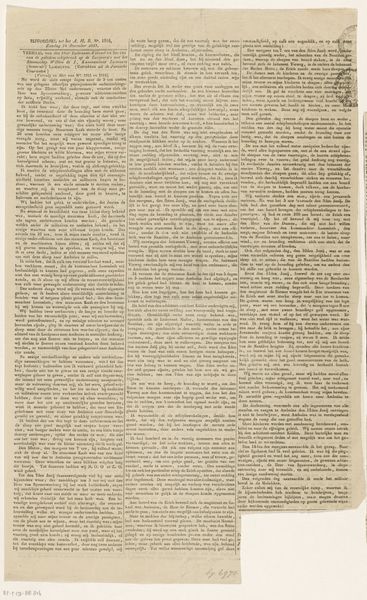
Tekst behorend bij allegorie op de dood van Michiel de Ruyter, 1676 1676 - 1677
0:00
0:00
romeyndehooghe
Rijksmuseum
print, engraving
#
portrait
#
newspaper
#
narrative-art
#
dutch-golden-age
# print
#
history-painting
#
engraving
Dimensions: height 552 mm, width 414 mm
Copyright: Rijks Museum: Open Domain
Curator: Looking at this engraving, I immediately think about the labor involved—the meticulous carving into the metal plate, the inking process, and the mass production that follows. Can you tell us more about the artwork itself? Editor: This print is entitled, "Tekst behorend bij allegorie op de dood van Michiel de Ruyter, 1676," created around 1676-1677. It commemorates the death of the famous Dutch admiral Michiel de Ruyter. It's currently held at the Rijksmuseum. I'm struck by the sheer amount of text; it's practically overflowing! Curator: Precisely! Consider the socioeconomic context—the demand for news, for public records and declarations! How printmaking allowed for a democratization of information. Editor: Definitely. And it’s interesting to think about how Ruyter was essentially turned into a symbol of Dutch naval power and national identity. We have to recognize that representations like this contributed to a specific historical narrative, glorifying certain aspects while overlooking others. What story did they want to write? What was suppressed in the making of this document? Curator: The story is very material. I think we need to discuss the function of this printed medium. The artist, Romeyn de Hooghe, capitalized on public sentiment by circulating detailed accounts of Ruyter’s life and death. Think about it—this print could become affixed to different surfaces, circulated and consulted by a diverse public. Editor: It speaks to how grief and national pride were being shaped, manipulated, and disseminated. Looking at it now, knowing what we do about power structures and propaganda, makes it almost impossible to see this as simply a historical record. Curator: It prompts reflection about the relationship between art and commodity. We see how graphic techniques transform personal grief into something consumed by many. I wonder about how the production was financed. Editor: Absolutely, understanding the social fabric is critical. By centering Ruyter’s personal heroism, this artwork contributes to constructing an uncomplicated narrative. And even now, we can analyze the visual and textual components to deconstruct and understand their historical agenda. Curator: Thinking about it from a modern point of view—do we ever truly know who's in charge of information? In other words, who owns it? I agree; it calls into question the means of disseminating and interpreting a document’s significance. Editor: Looking at it, I think that to truly appreciate this artwork, we must address all aspects, especially power and the means of representation during the Dutch Golden Age. Thank you for helping reveal its layered story!
Comments
No comments
Be the first to comment and join the conversation on the ultimate creative platform.


